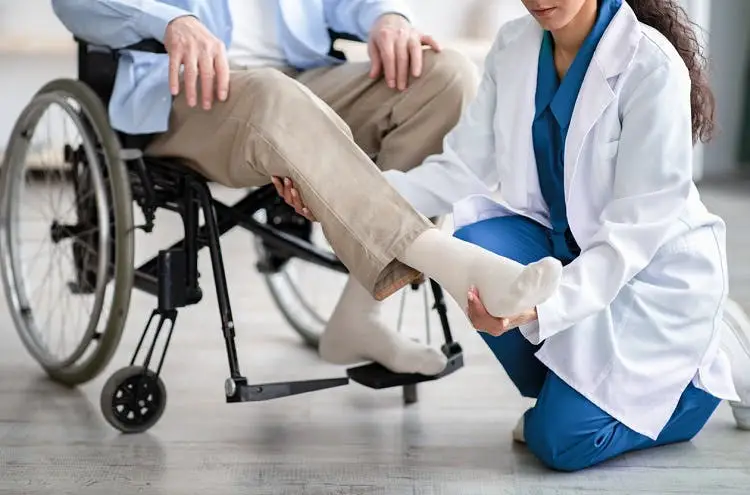Contact Us
We are here for you! Book you Physiotherapy Appointment by choosing one of the following option below
Write to us
Appointment@rcphealth.ca
Choose time slot
that work for you
Losing the capacity to move any or all of your body is paralysis. There are numerous possible causes, some of which may be dangerous. It could be either transient or permanent, depending on the cause. The lack of muscular tone in a portion of your body is known as paralysis. It occurs when there is a problem in the transmission of signals between your brain and muscles. There are several levels of paralysis. It could happen on one or both of your body’s sides. It may either be localized or broad, depending on the situation.

Paraplegia is the medical term for paralysis of the lower body, which includes both legs. Monoplegia is paralysis of a single area of the body, typically one limb. Hemiplegia affects an arm and a leg on the same side of the body. Quadriplegia is paralysis below the neck.
Strokes, spinal cord injuries, and neurological diseases like multiple sclerosis are common causes of paralysis. The damaged bodily portions of someone paralyzed due to a birth abnormality or sudden injury frequently have no sensation or movement. Paralysis might create issues with blood flow, breathing, functioning of the organs, speaking, eating, sexual responses, or regulating the urge to go to the toilet.
Many patients are never able to fully regain their sensation or motion in the paralyzed area. However, Physical treatment, mobility aids, and social and emotional support can enhance the quality of life. Surgery and medication are frequently beneficial as well. The degree of a patient’s paralysis and its underlying cause determines the best course of treatment.
Strokes, which typically result from a clogged artery in your neck or brain, are the most common cause of paralysis. It may also be brought on by harm to your brain or spinal cord, such as that which may result from a car accident or sports injury. Certain disorders or diseases associated with particular genes can result in certain types of paralysis:
The brain manages every voluntary muscle contraction. Several brain conditions cause paralysis, including:
Health issues or spinal cord injury is a leading reason of Paralysis. It is therefore important to maintain a healthy lifestyle. Wearing seat belts, taking precautions at work that are physically demanding or sporting activities is highly recommended. To identify early signs of paralysis, a physical examination is recommended at least once a year. While it may not be able to prevent all cases of hereditary paralysis, people can lower their risk by leading a healthy lifestyle. Some of the tips are as under:
Although there is no cure for permanent paralysis, depending on the cause and type of the issue rehabilitation may help. Rehabilitation cannot cure paralysis; however, it can prevent the symptoms from worsening. For those suffering from partial paralysis, physical therapy concentrates on increasing mobility and independence with activities of daily living. For patients with complete lower limbs paralysis, physical therapy can preserve tissue capacity while maximizing physical potential.
The Paralysis Rehabilitation program at RCP Health includes a variety of interventions, such as:
Physical therapy: Exercises and other physical interventions to help strengthen muscles, improve range of motion, and increase overall physical function.
Occupational therapy: This involves interventions to help individuals with paralysis learn new skills and adapt to their physical limitations, such as learning how to use adaptive equipment or perform daily activities with one hand.
Speech therapy: This involves interventions to help individuals with paralysis improve their ability to communicate, such as learning how to use assistive technology or techniques to improve speech.
Assistive technology: This may include devices such as wheelchairs, walkers, and communication aids, which can help individuals with paralysis perform daily tasks and improve their independence.
Counseling and support: Rehabilitation may also involve psychological support and counseling to help individuals with paralysis adjust to their condition and cope with any emotional or psychological challenges.
Rehabilitation for paralysis is a long-term process that may take months or years to achieve the desired outcomes. However, with a dedicated team of healthcare professionals and a commitment to the rehabilitation process, individuals with paralysis can make significant progress and improve their quality of life.
Write to us
Appointment@rcphealth.ca
Choose time slot
that work for you